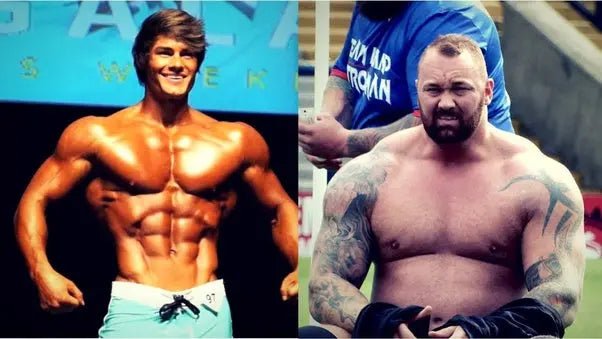
Powerlifter Vs. Bodybuilder? Everything You Need to Know
People tend to think of powerlifters as these huge dudes that are able to easily lift hundreds of pounds, and of bodybuilders, while perhaps more impressive on the beach, as having less lifting power.
But some people actually compete in both powerlifting and bodybuilding, and are able to alter their training depending on the type of competition they’ll be joining – it helps that there is some crossover in the strength you need to lift massive amounts of weight, and the slabs of muscles you’ll need to show for bodybuilding competitions.
The main difference between the two is that for powerlifters, you only need to focus on the maximal weight lifted for the squat, bench press, and deadlift. So, strength and higher numbers is the absolute point of everything. In bodybuilding, you’re judged for your appearance – and showing huge, huge muscles – muscles that you can also use for lifting huge amounts of weight.
Bodybuilder vs Powerlifter Body
Both powerlifters and bodybuilders compete on a platform or stage.
In powerlifting, there are three competition lifts: the squat, the bench press, and the deadlift. Your sole focus would be how heavy you can lift in each of these, while performing them properly.

In bodybuilding, whoever looks the best wins – and how this “look” is judged is generally based on three things: muscle size for all the muscles you’re able to show off, definition or just how well these muscles are showing, and of course, symmetry. So your focus would be just how well you can sculpt your body to meet all three.
Diet and Body Weight
Diet plays a huge role for both powerlifters and bodybuilders. You’ll have to alter your diet to what helps you lift heavy weights, or to what helps you show your muscles better. Of course, it will also help determine what weight class you can compete in.
There are many different weight classes for powerlifting and bodybuilding. These weight classes vary by federation, but people are distributed across different weight classes so competitions can be as fair as possible.
Powerlifters don’t need to generally watch their weight and be lean – again, the sole focus would be to lift as heavy as possible, and the bigger you are, the higher the possibility of being able to lift heavier. You’ll really only need to mind your weight if you’re targeting a specific weight class to compete in. Because of this, a powerlifter’s diet tends to be less specific. Powerlifters also tend to carry excess body fat more comfortably during competition off-season.
For bodybuilders, diet plays a more important role – specifically, being leaner would allow you to show more muscle definition, which is an important factor in winning. A bodybuilder’s diet tends to be more specific, and bodybuilders tend to stay lean throughout, including competition off-season.

Building Muscles
Training to the point of muscular failure, or to the point where you can’t perform a rep in good form anymore, is important in being able to build stronger, bigger muscles.
However with powerlifters, it’s also important to be able to allot the adequate recovery time to allow your muscles to perform optimally. It’s also quality, and not quantity that matters – meaning, pushing yourself and getting “used” to executing squats, bench presses, or deadlifts in poor form will only cause you to fail during the actual competition lift. Since powerlifters constantly push for lifting heavier and heavier weights, they also have a higher risk for injury – and lifting very heavy weights while not in optimal condition can be dangerous.

Strength Versus Size
Generally, the bigger the muscle, the stronger it is (and vice versa). But the type of muscle growth between powerlifters and bodybuilders can vary.
Powerlifters tend to train with heavier weights and lower reps. e.g. five reps or under with loads exceeding 85 percent of a one-rep max. This type of training tends to increase myofibrillar hypertrophy, which means an increase in muscle density tissue.
Bodybuilders tend to train with moderate weights, in a six to twelve rep range. This type of training helps boost sarcoplasmic hypertrophy, where fluid levels in the muscle cells increase.
Because of the difference in the type of muscle density or muscle size increase, you may see many powerlifters that don’t look particularly strong, but can actually lift very heavy weights – and bodybuilders with impressively muscled bodies, but may not have such a great strength-to-weight ratio.
Whatever type of training you end up with, help yourself stay free from injury by using the proper gym gear and accessories!





